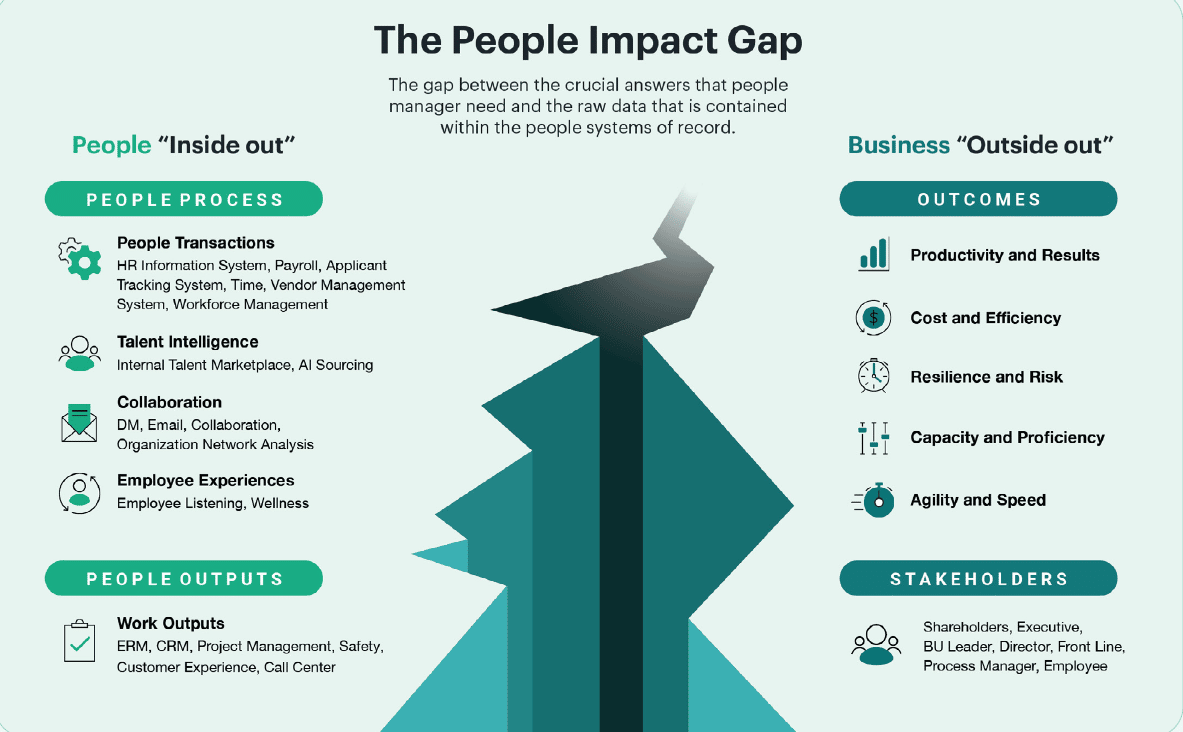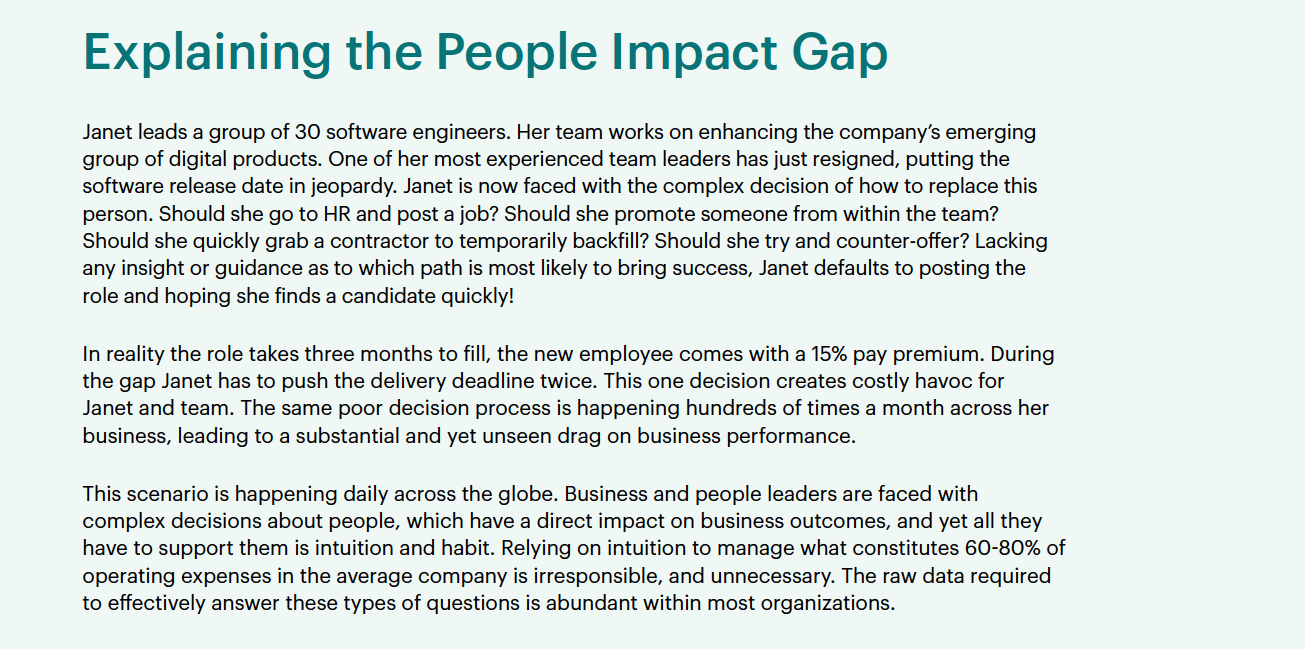New research from data-driven business advocacy group People Intelligence Alliance uncovers that what it calls the People Impact Gap—which stands between available people data and frontline decision-making—is costing corporate America $1.8 trillion annually.
“The cost of the People Impact Gap represents the amount of revenue foregone by organizations whose leaders are unable to make smarter data-driven decisions about hiring, retention, productivity and performance of their workforce,” said Ian Cook, managing director at People Intelligence Alliance, in a news release. “Very few leaders take an evidence-based approach to understanding and activating the people who make their business successful. In [this] research, it’s very clear that business leaders who leverage their people data have much greater business outcomes.”
The firm conducted this research during August 2022 and identified this cost based on work by Janet Marler, a professor at University at Albany, and Lexy Martin, a board member at People Intelligence Alliance and a principal researcher at Visier. Marler and Martin studied the use of people data in solving business problems by gathering results from more than 200 enterprise organizations.
They found that organizations with a higher level of ability to apply people data to business problems had higher profit margins and a higher return on assets. The best organizations had a return on assets 137 percent higher than their peers. They compared the average revenue per employee for the market to the revenue per employee of organizations with a more mature use of people data in decision-making. The difference between the best and the rest was $125,000 per employee per year.
In North America, there are 3,700 organizations with over 3,000 employees. Using a series of studies related to the use of people data in business, People Intelligence Alliance determined that approximately 700 organizations are effectively closing the People Impact Gap today. This leaves roughly 3,000 organizations of this size not applying people data to solve important business problems.
Using the revenue per employee differential of $125,000 per employee per year established in Marler and Martin’s research leads to a $625 million opportunity per organization. If 3,000 organizations were able to close their own People Impact Gap, the annual impact would be $1.8 trillion in North America alone.
Organizations such as Providence, a U.S. healthcare system with over 100,000 employees, are demonstrating how business leaders can materialize the money that is locked inside the People Impact Gap. This organization leveraged the data it held about people, the different types of work being done, their work experiences, and retention patterns to generate an annual saving of $6 million from a single project. This outcome helped increase pay for a large group of Providence’s hourly workforce. In the overall analysis of this project, the organization made substantial improvements to its financial position, and its employees took home larger paychecks.
“While the People Impact Gap is worth $1.8 trillion in economic terms, in the view of the People Intelligence Alliance, its real value is incalculable,” Cook added. “Alongside the financial gains, there are very real human benefits to approaching business with a more evidence-based view of your employees. The right way to start closing the gap is to bring together the right business leaders with HR leadership to focus on a key result. And then make the right investment in people and technology to deliver.”
Download the full report here.
In August 2022, People Intelligence Alliance looked at organizations with over 3,000 employees in North America. This produced a list of about 3,700 organizations. Based on survey data from Deloitte, HR.com and Insight222, it was determined that approximately 700 (18%) of this group have a good level of people analytics maturity. This left 3,000 organizations with either low or no ability to use people data. The mean size of these organizations is 5,000. This results in 3,000 organizations with 5,000 employees each who are missing out on $125,000 of revenue per employee. This equates to $1.8 trillion in economic opportunity.










